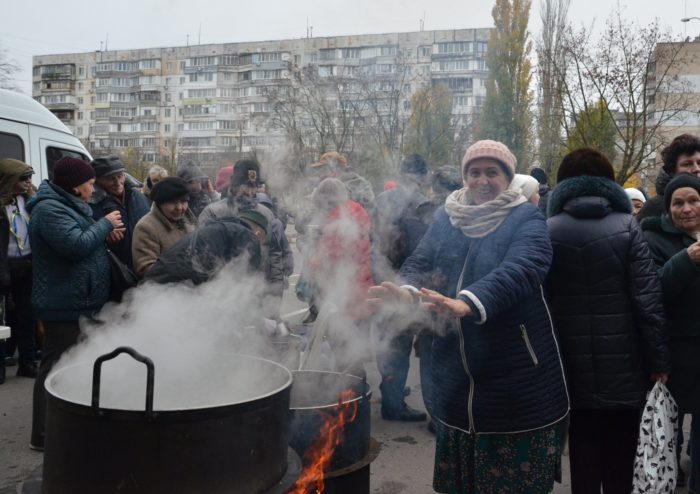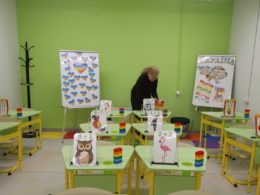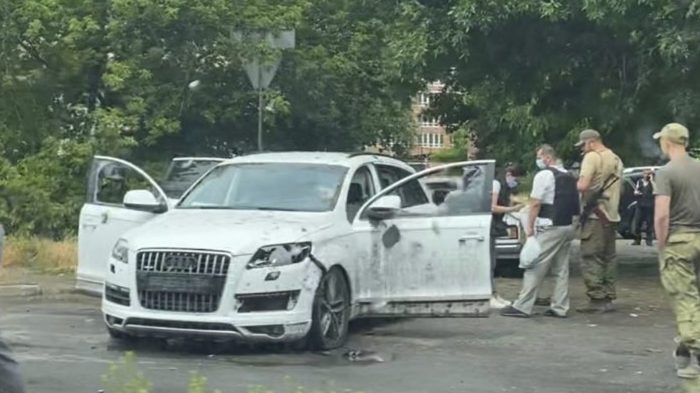Scottish volunteers cooking pizza on the streets, locals drawing water from the river as a daily routine and the euphoria of liberation that evaporates under the non-stop Russian shelling of the city. That's what Ukrainian journalist from Kherson Ivan Antypenko saw in his hometown when he returned after the eight-month Russian occupation came to an end. Today the city learns to live with permanent danger just across the river.
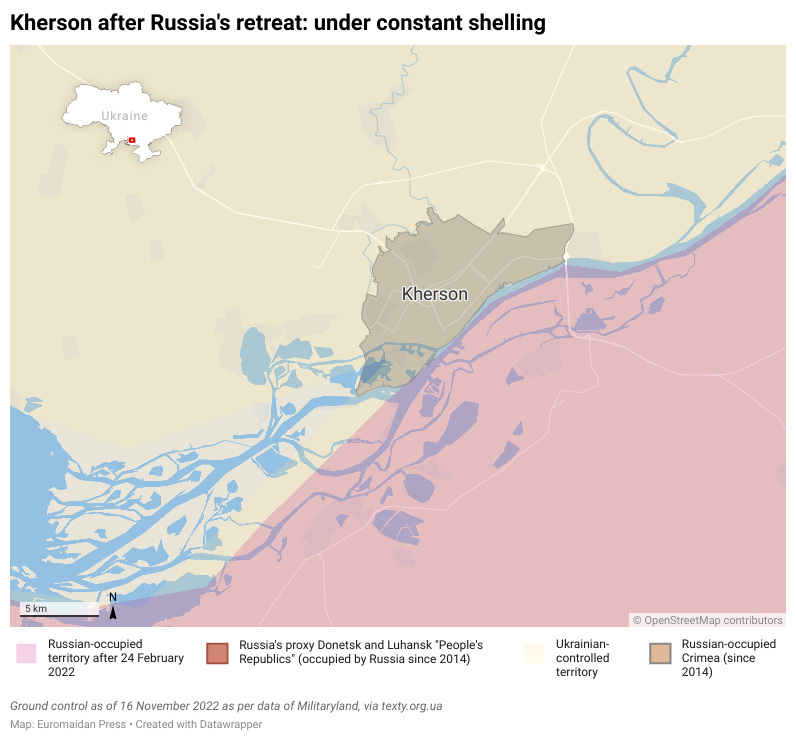
Kherson, the regional center of the Kherson Oblast in southern Ukraine, returned under Ukrainian control two weeks ago, on November 11. Russian forces retreated in disarray blowing up the city's energy system and leaving thousands of people in total blackout. The vast majority of neighborhoods in Kherson has been cut off from electricity, heating, water and gas supply since November 6.
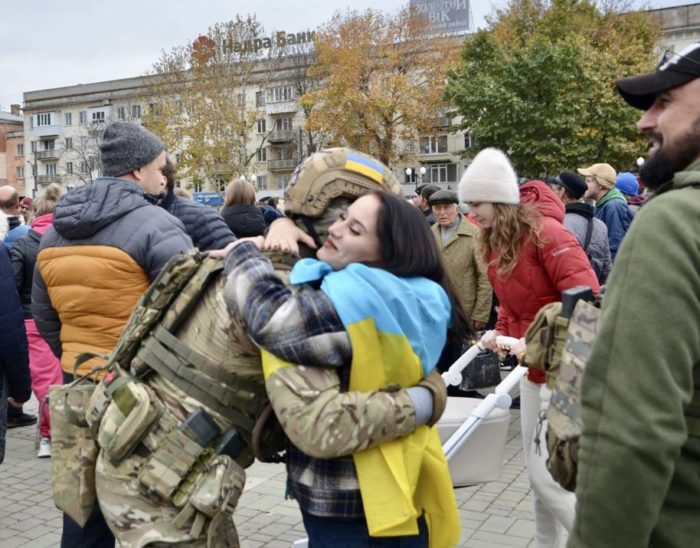
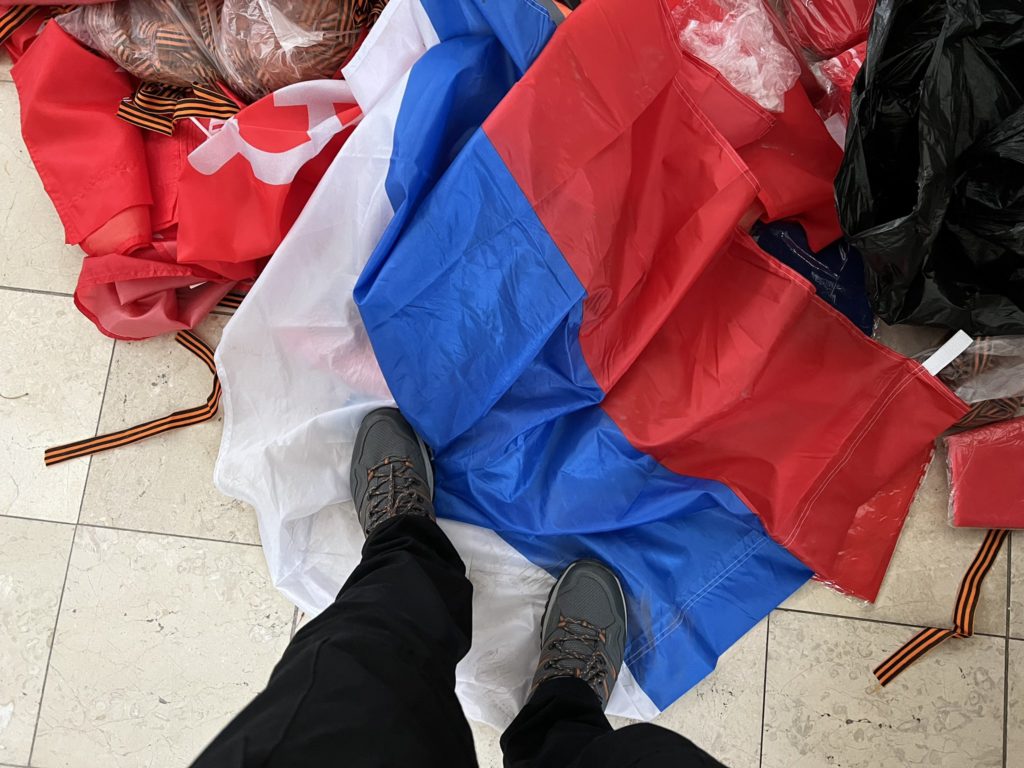
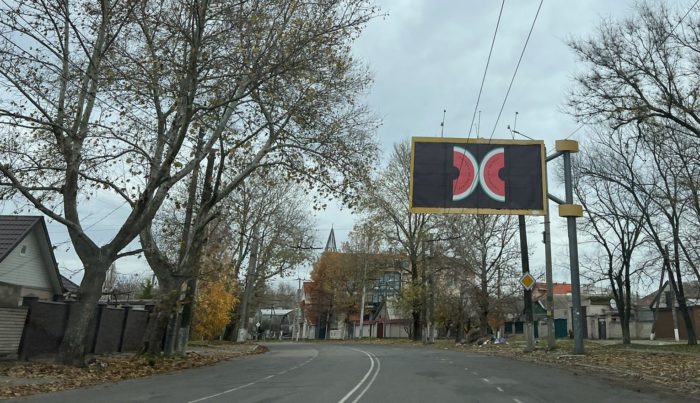
A typical day in Kherson starts with a hunt for electricity and water. The so-called Points of Invincibility are being deployed by Ukraine's government all over the country, Kherson included. These humanitarian shelters operate around the clock to provide heating, water, electricity, Internet, power for mobile devices, place to rest, first aid kits and basic supplies for mothers and children during power outages.
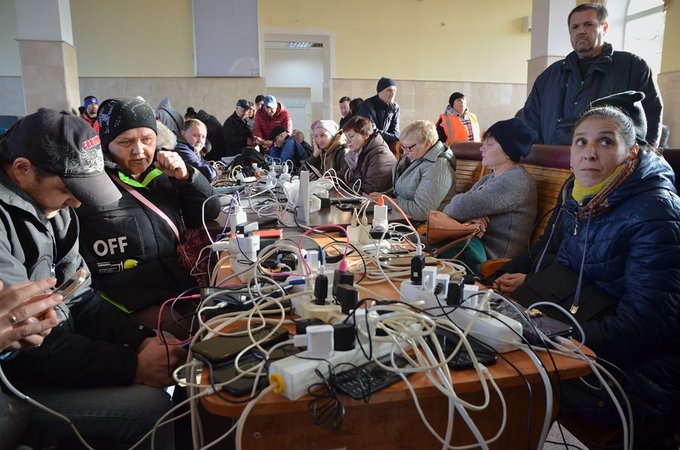
Currently, there are only five Points of Invincibility in Kherson, which is not enough to meet the needs of the city's population. That is why locals begin their days roaming around the city in search of a magic spot with electricity to recharge phones, flashlights, and power banks.
Usually, such spots can be found in selected cafes, supermarkets, police, and train stations or in those neighborhoods where people turn on a power generator allowing access to it.
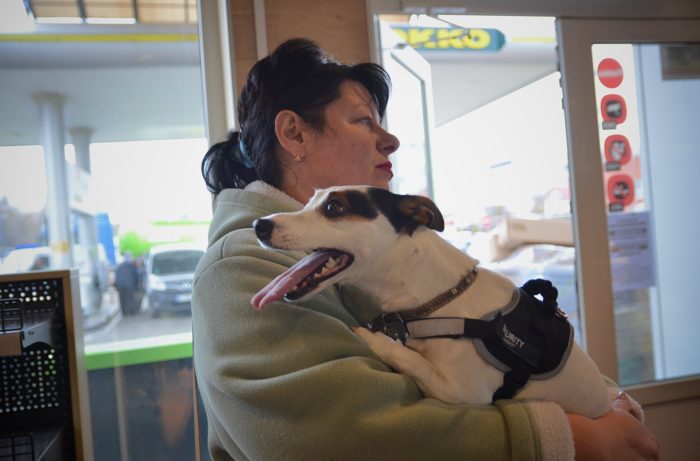
The next task that people in Kherson have to deal with every morning is finding some drinking and technical water. The latter is usually collected from the Dnipro River. Locals also set water bowls outside to fill them in on a rainy day. This water is good enough to flush a toilet. Then people rush to shops, markets, banks and post offices.
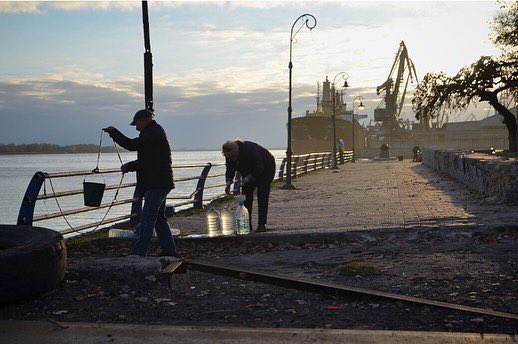
Eight months of Russian occupation pushed everything that sparked any memories about Ukraine out of the city. Gradually, Ukrainian banks, gas stations, stores and post offices resume their operation in Kherson.
Hungry for Ukrainian goods, people head towards overcrowded supermarkets and gas stations to buy Ukrainian bread or drink a cup of coffee in a warm place. Many stores still have Russian products on the shelves. Their prices are about twice as high. Their quality is much worse. That is what locals say after months of Russian occupation.
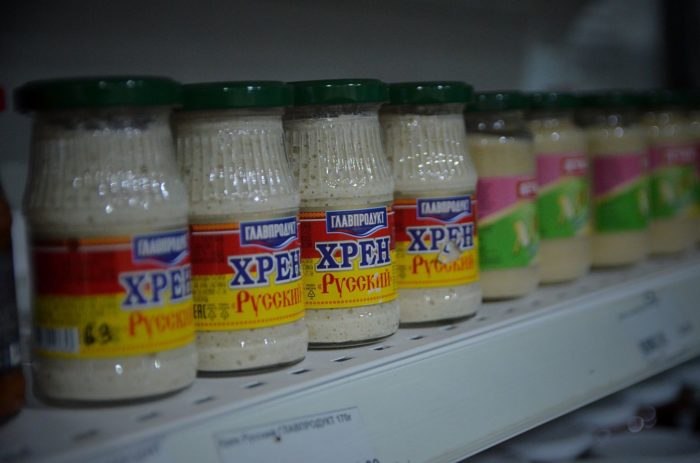
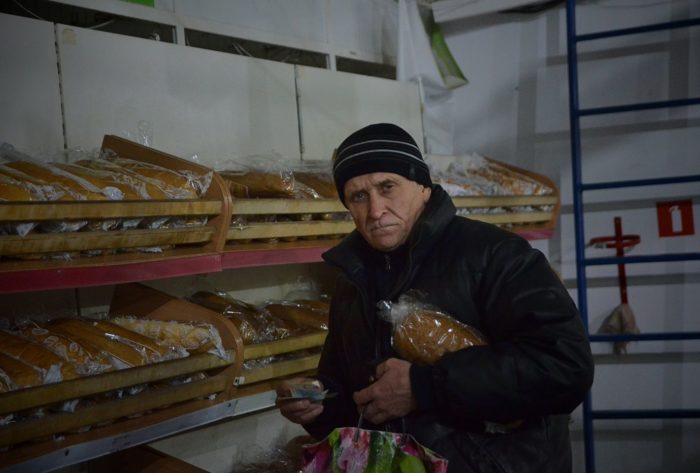
Humanitarian aid distribution still looks disorganized. Trucks loaded with food and hygiene products come to the downtown and other neighborhoods of the city. Crowds of people wait for them in endless lines. Scottish volunteers came to Kherson to make and give away free pizza right on the streets. They have already left.
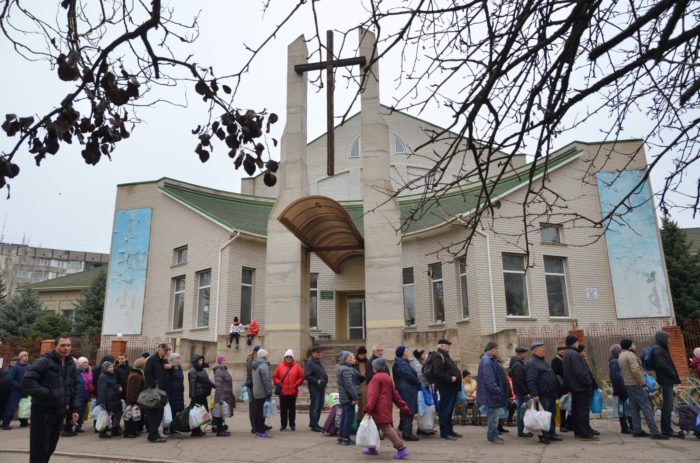

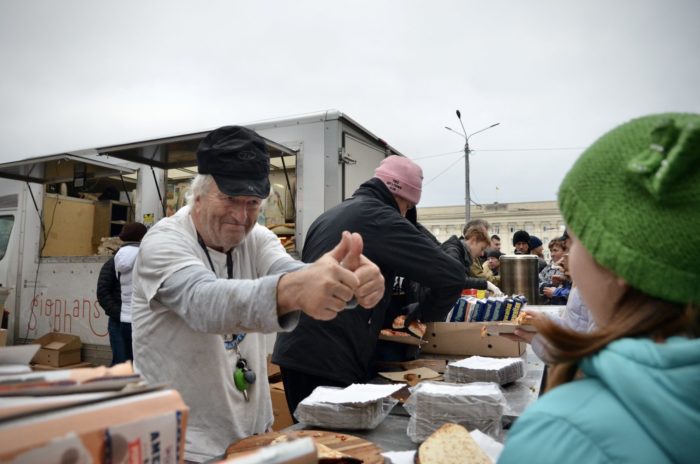
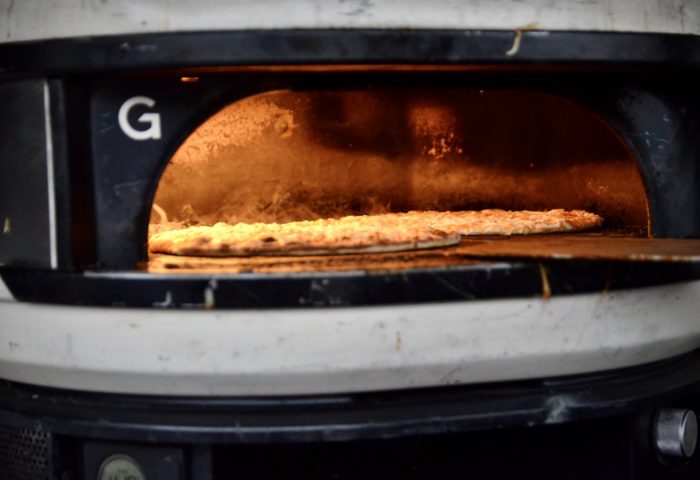
Every day Russians shell the city from the eastern bank of the Dnipro River, which is still under Russian control. People get killed and wounded during the Russian indiscriminate shelling day after day. Apartment buildings get destroyed.
Last night, on November 24, Russian artillery strikes at residential areas killed 7 and wounded 21 people
in Kherson, according to the head of Kherson Oblast Administration Serhiy Khlan. Today explosions in residential areas caused by Russian shelling are reported again.
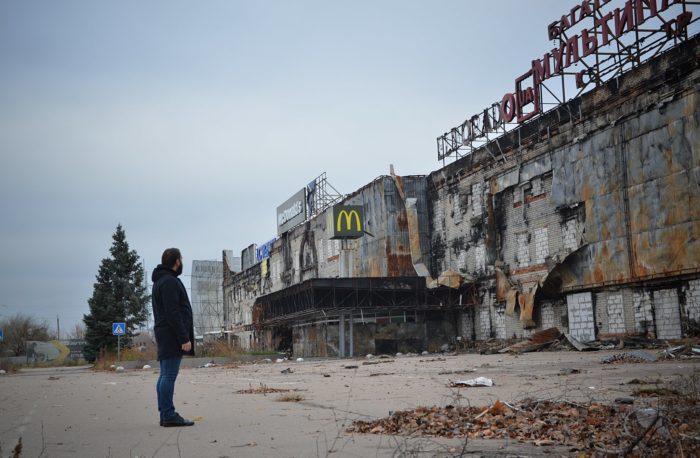
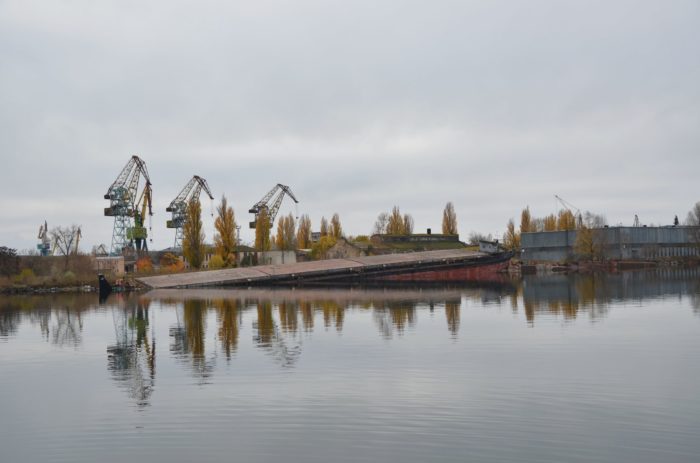
Despite the hardships and danger, people get together to help each other in every way they can. Some multi-storey buildings are cut off from gas supply. People have to master the art of open fire cooking on the streets.
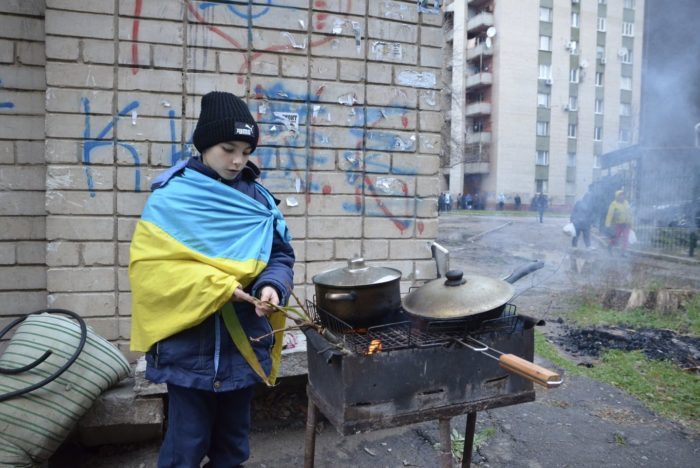
From now on, locals can travel from Kherson to other regions of Ukraine. Under Russian occupation there was no transportation between Kherson and Ukraine-controlled territories. Ukrzaliznytsia, the national railway operator, has launched daily trains to the capital Kyiv.
Buses depart to Odesa and Mykolayiv, a couple of other big Ukrainian cities in southern Ukraine. Evacuation trains to other cities are also available daily. Many locals choose to leave in search of a safer place to stay.
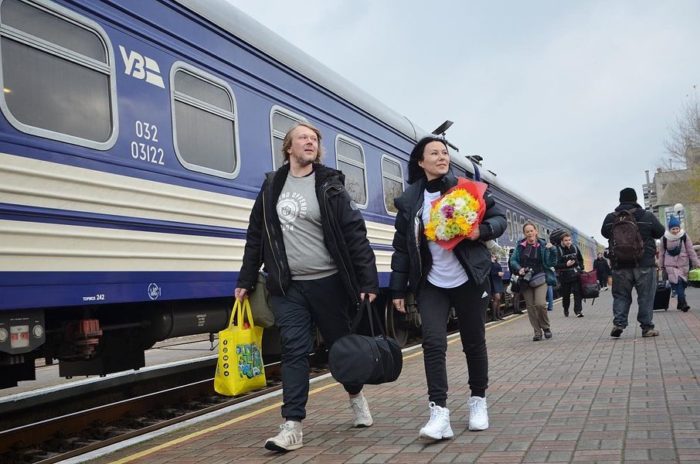
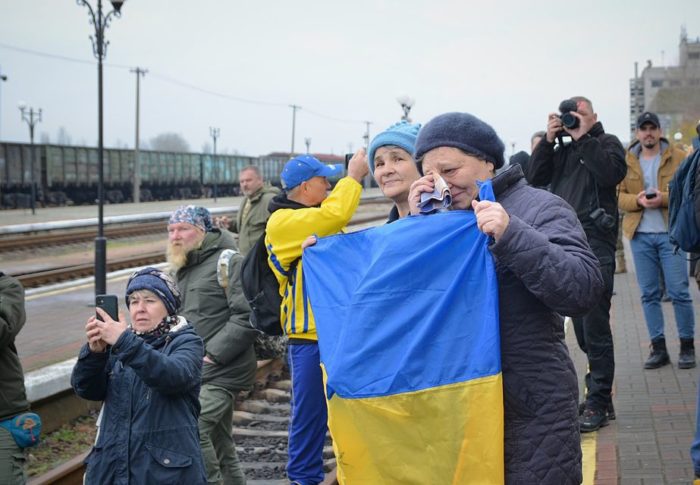
Russian occupation left its footprint on Kherson. The city is looted and full of anger with the invaders who took peaceful days away. Before the war, around 300 000 people used to live in Kherson, but today only 80 000 residents stay in the city, according to Serhiy Khlan, the head of Kherson Oblast Administration.
The overwhelming euphoria that took over people of Kherson when Ukrainian Army came back to the city is fading away. Harsh reality sticks around, just like in the rest of the war-torn country. Nevertheless, locals in Kherson are not willing to trade freedom for warm batteries in their houses. Kherson remains faithful to free Ukraine, no matter what happens next.
Related:
- After retreating, Russia shells liberated Kherson, forcing locals to flee
- “We couldn’t believe it!” Kherson residents on being freed from Russian occupation

